Inverness and Aviemore Direct Railway (Highland Railway)
Introduction
This line is open. Passenger services are provided by ScotRail from Inverness to Aviemore, Perth, Glasgow and Edinburgh. Stations remain open at Aviemore and Carrbridge.
Why built
The line was built by the Highland Railway to counter competing plans, such as extending the Invergarry and Fort Augustus Railway north to Inverness (which would have provided a good route from Glasgow to Inverness controlled by the North British Railway). Another plan was for a line extending the Great North of Scotland Railway from Boat of Garten to Inverness by a similar route.
This new route reduced the distance to Inverness by 25.75 miles, its promotion and opening putting paid to these competing plans and ensuring that the Highland Railway retained the route to Inverness from the south.
Dates
Portions of line and locations
This line is divided into a number of portions.
Aviemore to Inverness
This line required heavy engineering, notably the Findhorn Viaduct [Tomatin] and the largest masonry viaduct in Scotland Culloden Viaduct. Other large viaducts were required, Tomatin Viaduct and Slochd Viaduct. From the south the line was single track with passing places, double from Daviot to Inverness. Today it is double from Culloden Moor to Inverness.
This is a three platform station, formerly with a bay at the north end on the west side. The station was rebuilt and enlarged when Aviemore became a junction on the opening of the Direct Line to Inverness via Carrbridge. The name Aviemore is from Gaelic, 'An Aghaidh Mhòr' - The big (mountain) face, describing the hill Craigellachie which lies to the west.
...
See also
Inverness and Perth Junction Railway
Aviemore and Coylumbridge Timber Railway (War Department)

John Clark 10/04/2007
A small marshalling yard was laid out at Aviemore in the Second World War to allow southbound trains from the Forres [2nd] and Inverness routes to be sorted into Glasgow and Edinburgh portions and merged. It was an expansion of an existing set of sidings.
...
See also
Inverness and Perth Junction Railway

Bill Roberton //1979
Construction of two signal boxes, a north and a south, began here in 1898 but was abandoned. The site may have been considered for a station, not just a loop.
...
This is a two platform station with a passing loop. The main station building, waiting room and footbridge remain. The main building is timber and, in common with many Highland Railway stations, 'H' shaped in plan. At its north end the building is built out with a small glazed porch, a former signal box dating from the resignalling of 1957. Platforms are linked by a lattice footbridge. There ...
More details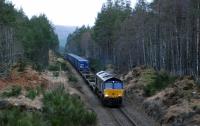
John Clark 25/02/2023
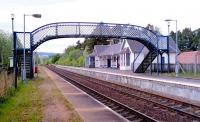
John Furnevel 22/06/2002

...
Gus Carnegie 07/08/2018

Gus Carnegie 13/04/2019
This is a single track bridge just north of Carrbridge station.
...

Gus Carnegie 08/11/2020
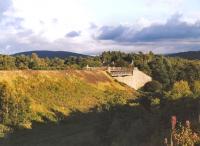
John Furnevel 01/11/2005
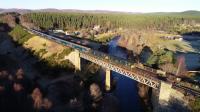
John Gray 31/12/2019
This is a 26ft single track bridge with mass concrete abutments over the Baddengorm Burn (Allt nan Ceatharnach) north of Carrbridge station and the Dulnain Viaduct [Carrbridge]. The original bridge here was a 15ft arch.
...
This is an eight arch masonry viaduct carrying a single track and south of Slochd Summit. The viaduct is quite wide, possibly intended to allow doubling. Also known as Slochd Mhuic Viaduct, the line passes over the wooded course of the Allt Slochd Mhuic.
...

John Gray 24/04/2022

John Gray 23/04/2022

John Gray 30/10/2020
Slochd (or Slochd Mor or The Slochd) is a summit, 1,315 ft above sea level, and passing loop between Carrbridge station and the former Tomatin station. There was no station here. The railway and road both make use of a narrow pass in the hills.
...
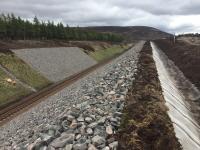
...
Network Rail //2020

...
Network Rail //2020
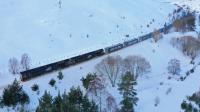
John Gray 08/02/2021

John Gray 30/04/2016
This viaduct is south east of the former Tomatin station and Tomatin Viaduct.
...
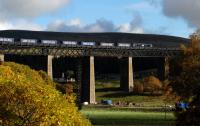
John Clark 20/10/2017

John Furnevel 05/11/2005

...
Network Rail 30/04/2020
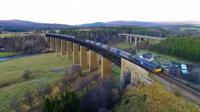
...
John Gray 31/12/2019
This is a 9 arch single track masonry viaduct. The viaduct is north of Findhorn Viaduct [Tomatin] and south of the former Tomatin station.
...

...
John Gray 04/03/2019
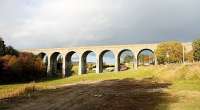
John Furnevel 25/08/2007

John Gray 14/04/2007
This was a two platform station. The platforms remain, a loop, closed modern signal box and railway cottages.
...

John Furnevel 26/08/2007

John Gray 10/05/2019

Caleb Abbott 22/04/2019

John Gray 12/10/2017
This distillery opened with the Inverness and Aviemore Direct Railway (Highland Railway) in 1897. The distillery was rail served, it is on the west side of the line.
...
See also
Rail Served Distilleries

Bill Roberton //1976
This was a two platform station. The station building still stands on the site of the southbound platform, there is a passing loop and much of the former platforms. The station building had a private waiting room for Alfred Donald, 28th Mackintosh of Mackintosh of Moy Hall. This room was in the southern wing of the building.
...

John Gray 04/12/2023

John Gray 24/09/2021

John Gray 13/03/2022

John Gray 22/12/2022
Also known as the Moy Viaduct, this single track timber viaduct is north of Moy station. It has sufficient width for two lines, but a second was never laid. The length is roughly 132 ft.
...

John Furnevel 01/09/2007

John Gray 08/05/2018

John Furnevel 01/09/2007
This was a two platform station. This was the southern extent of the double track section running south from Inverness Millburn Junction. The line remains open but station is closed.
...

...
John Gray 28/01/2019

Ewan Crawford //

John Gray 26/06/2008
This is the largest structure on the Highland Main Line between Perth and Inverness. Also known as Nairn, Culloden Moor, Leanach or Clava this viaduct crosses the River Nairn just to the south of the former Culloden Moor station. The viaduct is A listed. The engineer was Murdoch Paterson.
...

John Gray 07/11/2020
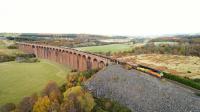
John Gray 30/10/2020

John Gray 16/09/2021

John Gray 07/11/2020
This was a two platform station just to the north of the large Culloden Viaduct. In addition to serving the local community the station was specifically advertised as being close to the Culloden Battlefield Memorial.
...

John Gray 08/09/2021

Network Rail //

Mark Bartlett 01/07/2011

Brian Forbes //1997
These crossovers are about half way between Inverness and Culloden Moor and provide some flexibility should there be a problem on this double track section.
...

Frank Spaven Collection (Courtesy David Spaven) //

Frank Spaven Collection (Courtesy David Spaven) //
This junction is east of Inverness station and is where the routes to Aberdeen and Perth divide. The Perth route initially travels north before swinging over the Aberdeen route to gain some height before turning south.
...
See also
Inverness and Nairn Railway
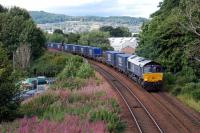
John Clark 19/08/2023

John Gray 12/04/2009
Millburn to Welsh^s Bridge
A double track line ran west from Millburn Junction to west of Welsh's Bridge Junction, the alignment being to the north of the original still open line.
This junction is east of Inverness station and is where the routes to Aberdeen and Perth divide. The Perth route initially travels north before swinging over the Aberdeen route to gain some height before turning south.
...
See also
Inverness and Nairn Railway

John Clark 19/08/2023

John Gray 12/04/2009
This signal cabin controlled the junction between the lines to Aberdeen and Perth (to the east) and the approach to Inverness Shed, Inverness Goods yard, Inverness station, Lochgorm Works, bypass to Rose Street Junction, carriage sidings and Millburn Yard.
...
See also
Inverness and Nairn Railway
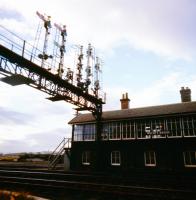
Aitken Scott //
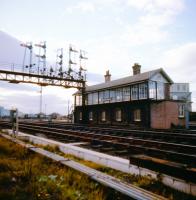
Aitken Scott //





















